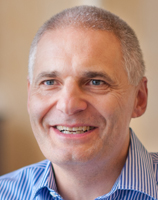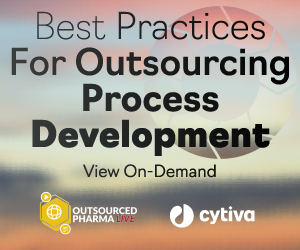How Involved Should Biopharma CEOs Be In Outsourcing Activities?

By Louis Garguilo, Chief Editor, Outsourced Pharma

When outsourcing drug development and manufacturing, how involved should the CEOs of emerging biopharma be in the requisite day-to-day activities and processes?
Now that’s a good question.
James Mackay, CEO of Aristea Therapeutics, and independent board member to emerging biopharma, says when he’s advising new CEOs, he answers by first informing them “at some point along the way, normally something in your CMC activities becomes problematic.”
And thus: “The CEO is likely to be the ultimate decision-maker on more activities related to outsourcing than they might expect.”
Mackay, who earlier in his career at AstraZeneca helped guide six drugs to commercial approval, outlined the role of an independent board member for emerging biopharma in our earlier conversation.
Here he’ll turn specifically to our leading question.
CEO In The Weeds

He describes the attempted nano-milling of an intermediate that “works beautifully on small scale, but not so well moving to large scale.”
CEO-level concern? Mackay thinks so.
But first, he says, it’s important – even at “virtual” start-ups – the CEO has at least a core team in place. That team can include an independent advisor suggesting approaches to the challenge; consultants and SMEs, who in this case, for example, can help the CEO better understand particle-size distribution, impacts of adjusting speeds, or the time of milling.
Next, as Mackay puts it, the CEO must recognize the people at the CDMO know their equipment and technology better than anybody. “They’ve seen more projects than we have,” he says. “Working with them as part of your team is critical.”
“Nonetheless,” he continues, “in the middle of all these resources, as CEO I must be highly engaged.”
So while CEOs will have other activities on their minds – and calendar – they should also serve as Chief Outsourcing Officer. How an outsourcing impasse is resolved is a vital leadership decision.
In fact, insists Mackay, that leadership starts much before there’s a challenge with something like a spray-drying scale-up at a CDMO.
It starts at company formation.
It requires a nuanced conception of the style and substance of the new company’s outsourcing model – and the resultant search for enabling partners.
The emerging biopharma CEO starts his decision tree with:
“How will we approach outsourcing?”
“Which service providers will best enable that strategy?”
Says Mackay:
“When as an independent board member I am advising the CEO, I relate my own experience by making it clear I’ve always talked one-to-one with my counterpart at the provider we're considering, so they understand the way we want to work together, and to create that ability to communicate at the top of the two organizations.
“Sometimes you will have to get up to that level to get some decisions made or resources released.”
But Keep Your Head Up
The above, though, comes with a caution:
All this outsourcing preparation from the outset, and day-to-day involvement, is done in service of the ultimate goal of commercial success.
“Although I'm a development guy by training, I've always been in that commercial interface,” says Mackay. “My colleagues in AstraZeneca used to describe me as the most commercial development leader we ever had!”
Mackay learned that as you design your program, if you are not thinking about that end goal, chances are you will not design the program appropriately.
“You should be thinking about regulatory approval; the market, even what the payer’s going to want; then how to build that into your clinical program,” he says.
“This is an area I’ve found I can add the most value in San Diego,” he adds. “Although we now have companies who have gone commercial – Acadia, Neurocrine, and GW, for example – historically San Diego companies don’t take their drugs through to market. So helping CEOs focus on that future point, and then think back about what needs to be in the program, is valuable.”
Outsourcing Advice Wrapped Up
Here’s our CEO checklist, as provided by an independent board professional:
- Start with a vision of ultimate commercial success. Work backwards to what you’ll need at each step of the way to attain it
- Define your outsourcing needs, style, and method. Select service providers that best meet those parameters.
- Stay involved in the day-to-day outsourcing process and decision-making
Mackay says the mindset is to take your program through to commercialization, even if that ultimately is never going to happen, for example due to an acquisition by a strategic pharma. “It's still the way to think about it.”
This ensures the organization makes the right decisions at the right time “for the development of the product.”
It also positions you for a deal with a strategic partner should that materialize.
“A larger pharma company will look at your program and say, ‘These guys have been thinking about this in the right way.’
“When we started up Aristea,” explains Mackay, “the first meeting we ever had with our CMC consultants was to talk about the ultimate commercialization of the product. What would that look like? What are the indications, the size of the supply chain we’ll need?
“We worked back from that. It doesn't mean your initial CDMO has to be the one that's going to commercially supply the product. In our case, we didn't do that. However, we knew how we were going to transition the development program.
“We went with a more niche CDMO to begin with here in San Diego, with the ability to respond more rapidly than the bigger players. It was part of the overall plan, piece by piece.”
And day to day, with an eye towards the ultimate goal of commercialization. The role of a CEO at a biopharma in 2021.

